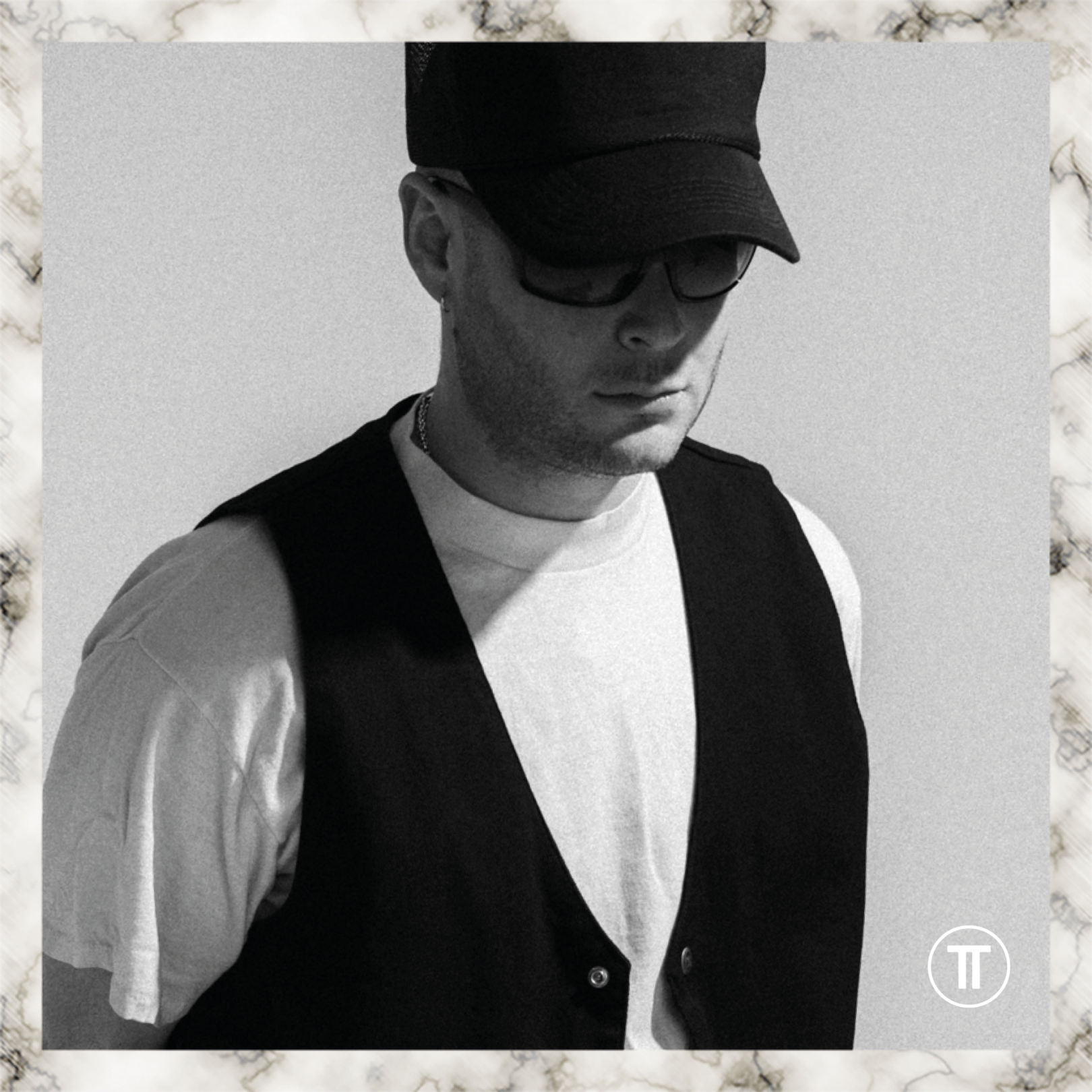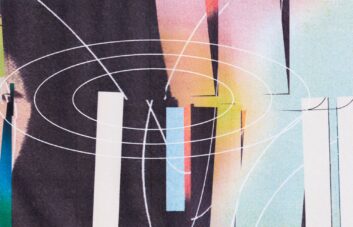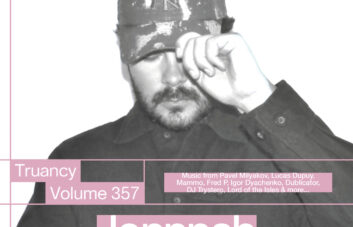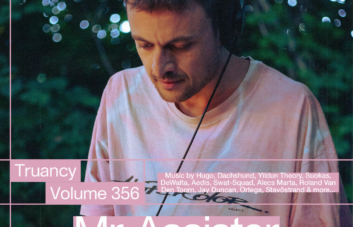Few artists celebrate Detroit’s musical legacy and ineffable influence on contemporary music like the producer and DJ known as 2lanes. A consistent presence in the city’s electronic music community, 2Lanes has worked as much behind the scenes as behind the decks, collaborating with a diverse set of local artists on everything from production to promoting shows, and of course, screenprinting his infamous ‘hardgroove revival’ tees. Since firmly planting roots in Detroit a decade ago, 2Lanes has been dedicated to lifting the city’s global electronic music presence, spotlighting its unsung techno heroes and visionary young creatives.
Known for his rapturous live sets and unpredictable productions, 2Lanes’ music is as emotionally expressive as it is stylistically boundless. While the techno synonymous with his home base acts as a common thread throughout his productions, 2Lanes’ vast musical inspirations span the likes of ’60s jazz to ’80s dub, ’90s club, and the experimental sounds of his contemporaries, including Miami’s Nick Léon and Detroit’s own Huey Mnemonic. Currently residing at the edge of the city, 2Lanes has been churning out tracks at breakneck speed, seemingly never content to settle on a singular ‘sound’. A frequent collaborator, he’s worked with a number of worldwide peers to explore an array of musical styles, resulting in an experimentally diverse discography and wide breadth of artistic references. From the textural psychedelics of his 2023 release, Sid Ranger Redux EP, to the dub techno realms of his Diamond Rain EP, and the deep house expanses of his Overtone Series collaboration, released on his label, Auto Shop, 2lanes’ productions emphatically express joy and curiosity in electronic music’s infinite perspectives and possibilities.
Channeling the sounds of his recent DJ sets and live performances, 2Lanes pulls from his record bag for Truancy Volume 305 to express his love for bold, body-moving, cross-genre dance tracks. Featuring floor-stomping basslines, mesmerizing vocal bits, dubbed-out electronics, and electrifying percussion, 2Lanes’ mix is an ecstatic and cathartic whirlwind. Driving through ’90s techno and ’00s tribal, contemporary breaks and experimental dub, the artist deftly weaves through the decades, highlighting Detroit’s enduring musical impact, techno’s unique trajectories, and the everlasting power of drums. In the following interview, 2Lanes discusses his ethos and creative processes, artistic influences and collaborations, current and future projects, musical goals, local community, and much more.
Joey! How are you? Thank you so much for creating this mix and for taking the time to answer some questions. We understand you are mourning a serious recent loss. You have our sincerest sympathies, and we hope that you’re getting the love and support you need to begin healing. “Thank you, Taylor. As my name suggests there are always 2 lanes to life, the good and the bad, the happy and the sad. A year ago I unfortunately lost three friends. Two in the span of a week. It has been very difficult, and I greatly appreciate the sentiment. At that time a year ago, my bookings started to pick up. As I’m sure you know, great loss makes a lot of your responsibilities hard to tackle. Djing and playing live can be such an emotional and cathartic release. This is something I’ve never talked about publicly, but in these moments of expression I can get in such an emotional state; I can see the faces of the friends I’ve lost in the crowd, I get on the verge of tears, and sometimes even need to turn my back to the audience. It’s something I’m working on, but I think sharing this is a step.
As of writing this, last week I announced my latest record Sid Ranger Redux which features a stand up bass performance by one of my late friends, Jonathan Aylward, someone I’ve known and made music with since high school. The record announcement came just over a full year since he passed. It has been an emotional week to say the least. A portion of the proceeds of the new record goes to a foundation Jonathan was really passionate about called Edible Trails Project. I will say, the love I’ve received for my music, the love from my friends and community here in Detroit and around the world has been pivotal in my return to a sense of emotional balance. But is there ever a true return? I’m sure you can relate, but we never truly are the same after death. It is something I am learning to accept and love about myself. Thank you Taylor, I extend the same care and support to you as well. These kinds of things are never easy, and the healing process can be a long and difficult journey.”
Your recent creative output has been nothing short of astounding. How do you keep creating in times of loss? “That’s very kind of you to say. I had to push myself to do it; to sit down and finish the music, to honor the lives of my friends I miss so dearly. You have to keep going, to keep moving, to grow with the pain, see it for what it is, accept it, continue on and learn to love yourself and all the beauty the world still has to offer. Pain and grief can be extremely debilitating, but putting your art out into the world, a piece of yourself, can be one of the most freeing feelings.”
How often are you in the studio making music? What is your current schedule like? “I try to do something musical every day; practicing piano chords, learning my favorite songs, experimenting with Ableton or other recording processes, and making music with friends. The music community in Detroit is so rich and vibrant that I could be in a different friend’s studio every day of the week making something completely different every time. Sometimes a simple experiment can excite you to the point of finishing a song in one sitting. I recently moved to a new place on the edge of the city—the seventh place I’ve lived in Detroit now! The rent is cheap and I am fortunate that I can live off music, so I devote most of my time to working on music, cooking, and practicing yoga—shoutout to Iyengar Yoga Detroit! I am excited for the weather to get better so I can start riding my bicycle again.”
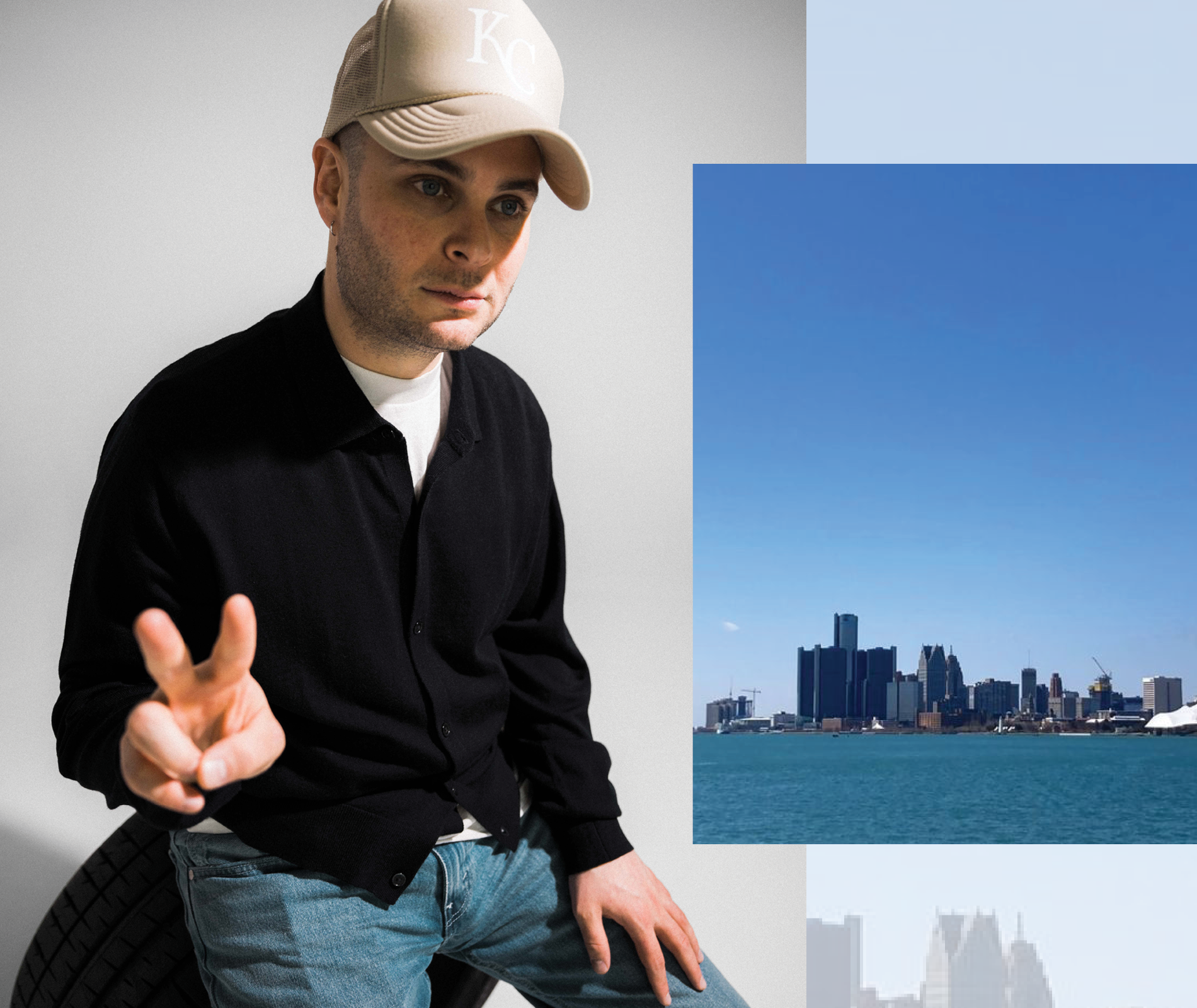
How much of the music you make gets released? Do you ever revisit productions from the past or do you prefer to keep looking forward? “I make a lot of music of all kinds. I like to think of it like painting. Sometimes you have big finished works and sometimes you have little sketches. The sketches are just as important as the wall-sized framed masterpieces. I love when you go to an art museum and they have a big retrospective of one of the great painters and you get to see their little sketches. One simple hand motion can capture the pure essential image of a dove. Once again here we revisit the name 2lanes…looking back and looking forward ;) Both are essential.”
Could you describe your journey to becoming a producer? What gave you the confidence or pushed you to take the first step? “I was living in NYC around 2012 to 2014. I was entrenched in the club scene at the time. Mutual Dreaming, Lit City Rave, 285 kent, Steel Drums, Trans-Pecos, Lady Fag raves, early Bossa Nova Civic Club nights—feels like a total different era now haha. This is where I discovered synths, grooveboxes, samplers, and drum machines. I ordered an MPC 2000xl off ebay for $300. It broke in shipping and then a friend happened to have one and gave me his. Pressing those pads and attempting to make try-hard Nguzunguzu sounding beats was what made me want to keep going.”
What were some of your most formative musical moments? Any standout releases from your childhood or teenage years that have stayed with you? When did you first contemplate a career in music? “I think it was middle school and there was a talent show and I was asked to do a Beatles lip sync cover with some other boys. I think this was one of the first times I was ever on a stage. They made me be the drummer which at the time made me sad. Ironically I would go on to be a drummer and now I approach all aspects of life rhythmically; total love for drum.”
My parents raised me on Sade, Bob Marley, and Steely Dan. I always enjoyed “Punky Reggae Party” by Bob Marley. I eventually found Trojan Dub compilations and that changed everything for me musically. When I was living in NYC I was trying to work in the music industry. I had a load of different jobs at labels and music marketing firms. During this time I actually wrote one article for Truants, about my love for Towa Tei! I had lost a job in NYC and all my friends told me to come back to Detroit and take music more seriously. I don’t think my music would be the same if I didn’t move back to Detroit when I did. And here we are almost 10 years later…”
As someone who’s worked a lot behind-the-scenes at various clubs and venues, how has this affected the way you interact with these spaces as a performer? “First and foremost I know how I should be treated as a performer. I worked at a club in Detroit for two years and took great pride in welcoming traveling artists to the city and making them feel comfortable. Having been on the other side, I have great respect for all venue workers. I know it’s a grueling job; these workers are there longer than the artists and the fans. Everyone has a name, everyone has a story, everyone gets tired. Show a little love and respect; I don’t need my m&ms separated or anything.”
How would you describe your music to someone completely unfamiliar with techno? What are the key characteristics or elements of your sound? “I would describe it as music for howling at the moon with your friends in a field. I honestly don’t know how to describe it. Lately people have been telling me I’ve “found my sound,” but I still don’t know what that is. I try to encapsulate visceral moments, sounds that make you feel alive, sounds that make you wanna burst into tears in the middle of the rave and hug your friends. Remind yourself of the beauty, pain, and mystery of the world.”
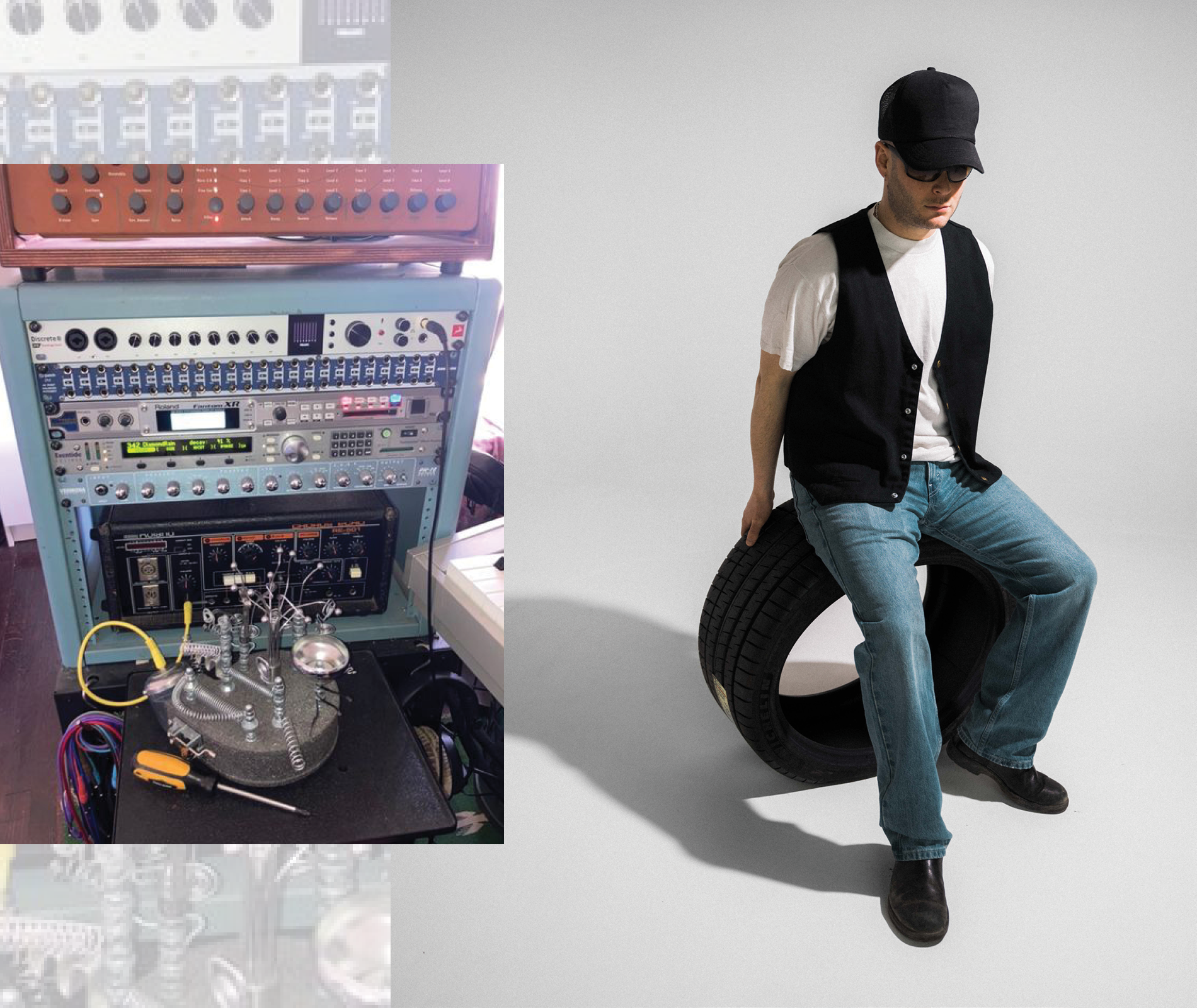
In what ways have you evolved as an artist over the years? How would you compare the sound of your first productions to your recent output? “Control and intention. I used to be totally live, all hardware, but I wanted better sounding mixes, more control over the individual sounds. Now everything is tracked individually. Sometimes I do a long take of a sequenced synth line and then layer it in Ableton with drums and other stuff, dubbing it out. I love Eventide effects. I have a bunch of the plugins; amazing and classic sound. I think about this comparison a lot, my older music compared to how I sound now. Things were a lot more rough and off the cuff back then. Kind of like the scene in Dr. Strangelove when the pilot rides the bomb like a bull out of the bottom of the plane; a sort of here goes nothing kind of mentality. The bass definitely hits a lot harder now. I approach ideas with more intention now, more purpose driven. Sharpened focus. I’m a little more comfortable in the driver’s seat now.”
When creating music, do you consider the way it will be performed? As someone who does frequent live sets, what role does that play in your production process? “See this is my biggest gripe! I always think my music is too unplayable or not techno or not house enough…or it’s too nuts and bolts compared to some of the slick modern productions I am a fan of these days…like K. Wata or Nick Léon…both are huge inspirations. Lately I’ve been trying to learn to love the 16 bar formulaic phrasing of dance music. It does help with the playability of your music. I’m working on the next release for my own label, Auto Shop, and I think it’s a perfect example of taking what I love about my old music, raw/textural/psychedelic moments, and marrying it with the sleekness of my new found skills. I love Dub music and dub recording processes. I am always trying to capture a live feeling in my music but make it practical. Like a perfectly weathered pair of vintage Levis jeans; fits well, not too baggy, but with that perfect blue jean fading.”
The first time we met was outside the Bossa stage at Sustain-Release back in, what, 2018/19? Then I got to see you perform one of the most incredible live sets I’ve ever seen in The Grove last year (2022). What was that experience like for you and how did you prepare for that moment? What was the reaction like? “Actually I think it was Year 4 (2017)! The live set was insane for me. I was floored by the response. The grove stage outside was amazing. I got to play in an incredible run of contemporary artists. I had to follow Nick Léon and Bitter Babe. I was so nervous to play after them. Purelink ended the stage that night; they are very close friends and I love their music. I was very focused, and I wanted it to be hard, loose, silly and fun. People were screaming in the woods; apparently there was a massive line at the bridge to get over to check it out. I got a lot of accolades for it and still do. It was an affirming moment for me for sure.”
How do you adapt your sets for different environments, crowds, etc? Could you describe your current live setup? “Lately I’ve been DJing a lot more and this past year I’ve done it all from open, peak time, to close out. Sometimes it involves matching the energy of the DJ before me and sometimes I like to drop a cheeky intro to change the mood and it usually works. I’m a big fan of everything tongue in cheek. My live set never really changes. It’s very in your face, peak time, lose yourself in the moment. It’s very simple gear wise; an Octatrack cueing samples and sequencing a drum machine and a bass synth, all of which go into 4 channels of the pioneer DJM. I love the playability of the DJM, the FX, the interface of it; you can really rock out with that. Headphone cueing allows me to really go freestyle with the samples. I like to have fat bass, hard drums, some out there loops and cheeky big samples. Sometimes I even sample loops from my favorite old dance records; just press play and let it rip.”
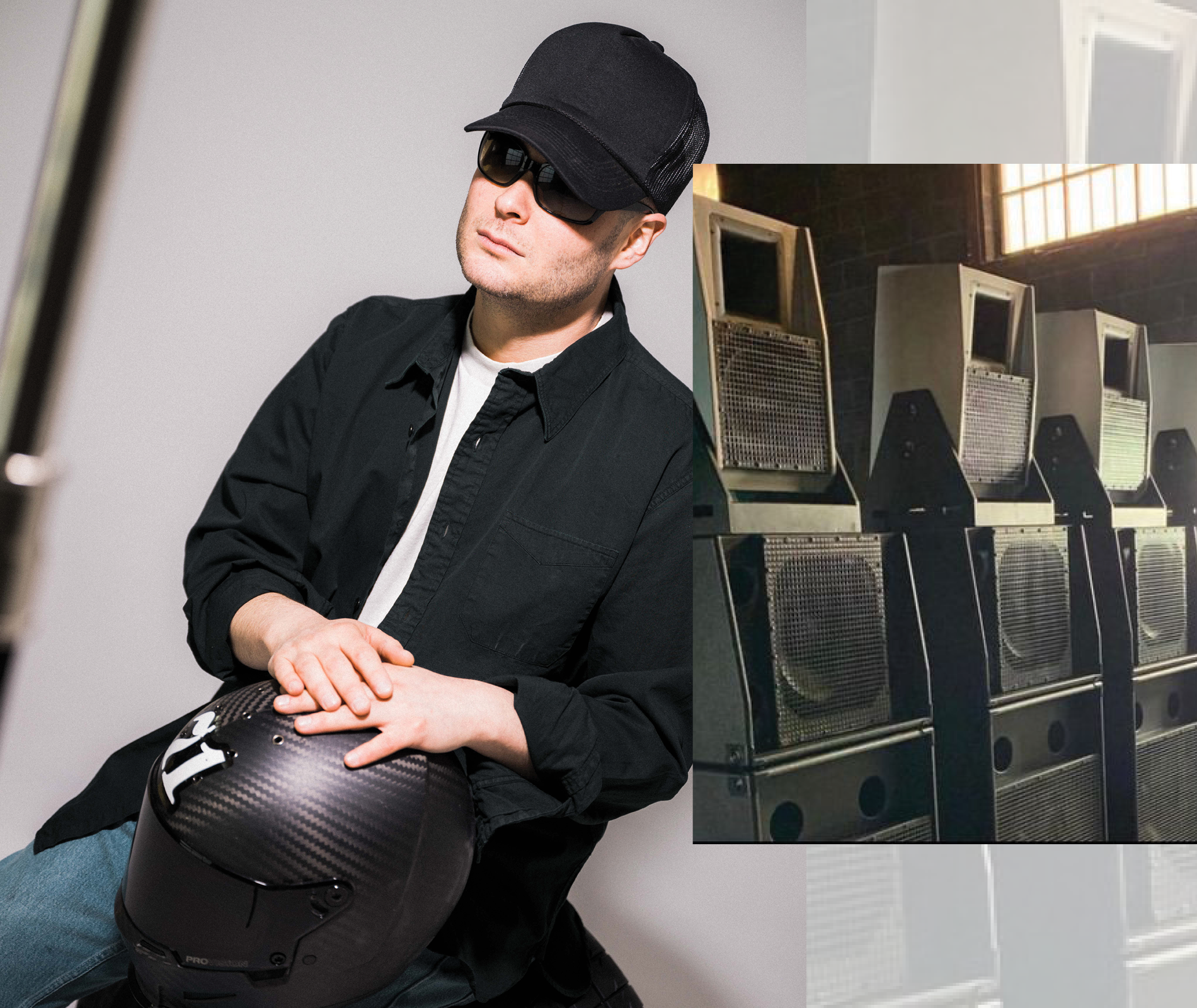
What musical styles and artists have been most influential to you? Do you find yourself listening to more contemporary music or older tracks? What is your preferred method for finding new music? “I love Dub music, I love 2000’s funky tech/hardgroove, I love 90s NYC club stuff like Armand Van Helden. Also deep house like Guidance Recordings—Glenn Underground, Callisto, all that super deep stuff. Moodymann is one of my favorite Detroit artists; the way he tells stories with samples and creates the super cinematic sequences. I also love a lot of contemporary music…INVT, Ikonika, Talismann, I still think so many people now are in debt to what Nguzunguzu did 10 years ago. I go to record shops, I listen to mixes, I dig on bandcamp and discogs; all the normal ways. Sometimes twitter and instagram can even be the best tool to find new music, artists following and sharing each other etc.”
What role do vocals and melody play in your sets and productions? “I am not the most melodically driven person. I am teaching myself to become better, but you can’t beat a good hook. I love driving fast and singing my favorite old songs. I think vocals are a key connection from tune to listener. They instantly grab the listener and pull them in. Vocals can set so many different tones. I’m currently working with two different singers for two different records.”
What are the factors that lead to a successful musical collaboration? What have been some standout moments for you? Are there any artists you would like to work with in the future? “Communication is key and a willingness to be open creatively. Let everyone have a hand at the wheel. I started my own label recently with a record by OVERTONE SERIES, a collaborative project with DC born, Detroit based, Jonah Baseball. Jonah is one of the most musical people I know; I learn so much from him. Both his quickness in a DAW and melodic sensibilities are boundless. The way he samples always blows my mind. We will be working on something and he will be like, “Oh I know what it needs!” and go and pick out a specific record from his big collection, pitch it correctly, and sample it in.
I’ve been recording a lot with my other good friend Ryan Spencer, who is part of the Freakish Pleasures crew here in Detroit. Ryan has been based in Detroit for a very long time, and is an amazing record digger, always showing me amazing stuff. We have been making a lot of downtempo-itunes and it’s been really fun and a new sonic area for me. Ciel came through Detroit for a show. Her, Ryan and I made some music and she had this really great method for going from sketch to song. It was extremely inspirational.
Huey Mnemonic and I have been making some music together as 3rd Sphere and its really fun, excited to get in the studio with him more. He has such a good ear for mixing; everything he makes is so big and clear and translates really well on sound systems. JoRadSIlver is another Detroit based artist I make music with. We have a project we are working on and he has a very old school style studio flow and it’s really fun to work with him—we are making very sludgy drum dub stuff.
I also love working and learning from mixing engineers. Salar Ansari mixed my last two records and I loved sitting with him while he worked on it. Russel EL Butler has also done some mixing work for me and I think everything they touch sounds so good; they are so good at explaining the intricacies of mixing and mastering. Kiernan Laveaux is a good friend and we are always talking about productions we like. She may be coming to Detroit soon and we plan on recording.”
Could you talk about your current studio, the setup, and maybe some of your favorite gear? What would your dream studio look and sound like? “Since I moved to a new place, my studio has shrunk a bit and I am now a bedroom producer lol. I like having a smaller setup. I have a good tracking setup and I like a lot of small handheld things to play with and put into Ableton and sequence—like a Korg Wavedrum, a dub siren, getting weird sounds from the Korg Volca Drum or Moog DFAM. I recently got a Roland Fantom XR synth off Craigslist. I love 2000’s romplers; I think they sound amazing. I also have an eventide eclipse rack. I run almost everything through it now and it sounds so beautiful. Sometimes I just practice keys through it for hours. I basically have my dream studio, though I would like to have a separate space to have it in with good treatment, but there are not many things like that available in Detroit. Also an Eventide H9000 would be cool…”
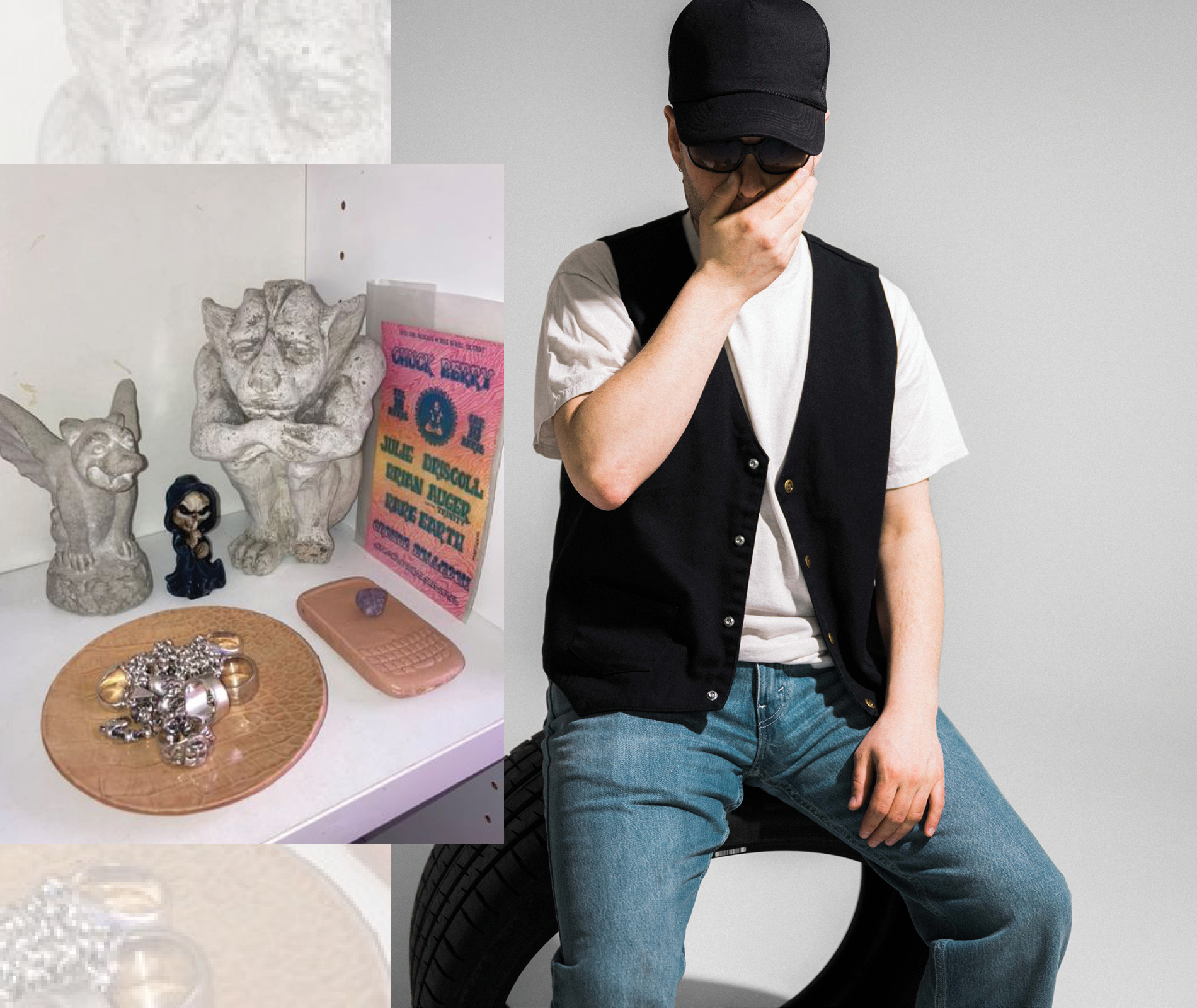
How would you describe the sound of Detroit and its impact on electronic music? In what ways is the city misunderstood? What does techno mean to you? “I don’t know if it’s totally my place to speak on this but I’ll say this: techno to me is an expression of self, an external reflection of your inner mood at any given time. Detroit is a state of mind. Gotta live in it to know it. It’s the feeling of strength even when everything around you is crumbling.”
How does the city of Detroit inspire your sound, aesthetics, and approach to production? “I would be nothing without the musicians old and new that inspire me in this city. I think every artist active in Detroit is completely conscious of the legacy of music of all genres that have came before them. From Alice Coltrane to MC5 to Scott Grooves, it all inspires me. Things here are rough around the edges, sure, but there is a brilliant and beautiful history of art, architecture, design and style that is born out of Detroit.
A small list of the people in my community that I find to be pushing the boundary of things and inspire me to keep my game up: Wet Dog, Rawaat, Huey Mnemonic, Blackmoonchild, Shigeto, Salar Ansari, Ahya Simone, Kesswa, Ryan Spencer, Ian Fink, Jonah Baseball, Todd Modes, Scott Z, Father Dukes, Max Watts, Fusegrade, Cherriel, Meftah, Deon Jamar, Bill Spencer, and last but certainly not least, John FM.
Lately an idea I’ve been obsessed with is Orga vs Mecha. I think Detroit has this unmatched ability of showing the connection between human and machine; imparting your own personal touch on something seemingly inanimate and giving it life and meaning. Someone here who really inspires me regarding this is my friend Danny aka BING AUDIO. He made this amazing sound system that we use at this party I help organize called FORMULA. The design and work ethic is unparalleled. You look at a normal PA speaker and you look at one of his speakers and it just floors you. It makes you think of Hellraiser or Akira. The look of it transports you to somewhere else. I am constantly fascinated by the power of the human touch and how that relates to this music.
With my productions I actually don’t want to remake the same sounds and things that have been done before—and this is by no means disrespectful to people who do this—do whatever you want, do what makes you happy, but do it with respect. Respect for what came before you, what’s going on now, and what will come next. I could sit here and make a million 909 beats with the same old chord progressions, but what will that be achieving? My own personal production goal is to bring out what’s inside of me and my reaction to this city, this country and this world. Love, loss, life, mystery, pain, ecstasy. That’s what inspires my productions.”
In what ways has Detroit changed musically over the last 10 years? How has a major annual event such as Movement affect the city’s local artists? How could the city better support its local arts and music community? “There’s a lot more action. When I first moved here there were dead weekends with nothing to do. Now there is so much going on, its great. A lot of young new diverse voices are entering the playing field and it’s really wonderful to see. Over the past 10 years I’ve seen a lot of interest in the city and its cultural output. I’ve entertained writers, pop stars, designers, professional skateboarders and more. Driving them around the city showing them what I see, taking them where I like to go.”
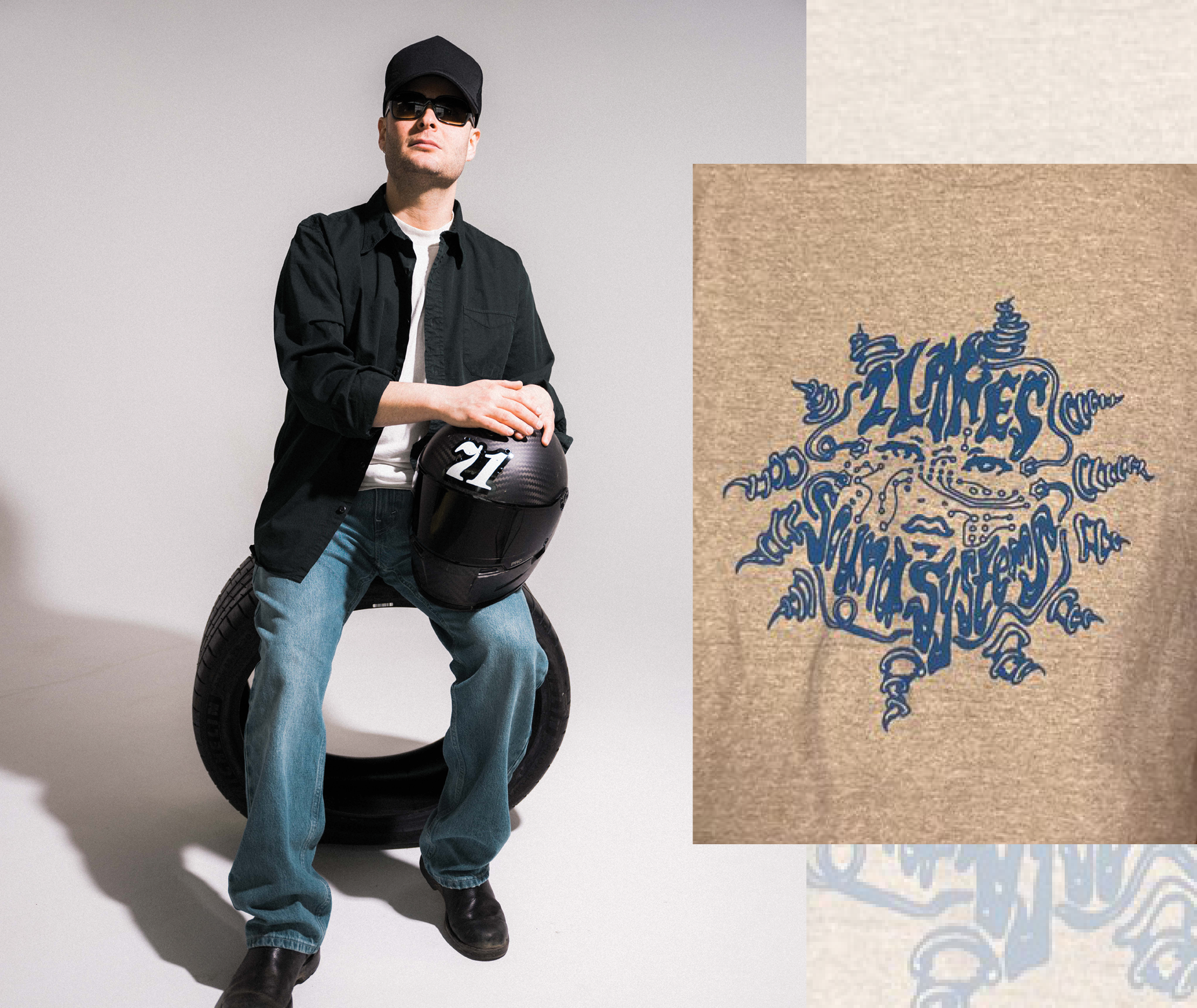
What are some of your favorite places in Detroit? Where is your favorite place to hear live music? “I like Peoples Records, I like Anthology Coffee, I like all the amazing middle eastern food in Dearborn. I like Sweetwater Tavern wings, we all miss Motor City Sports Bar burgers. I like shrimp fajitas from Los Altos. I like staring at the RenCen from the little bench at the tip of Belle Isle and thinking about life. I like car shows, street races, biker parties and roadside BBQ in the summer. And I love a seedy warehouse or basement with a loud sound system, but not as loud as the balloons being filled in the corner. City Club forever.”
As you’ve become known for your 2Lanes tees and DIY merch, how did you get into screen printing? What other artistic mediums do you enjoy? “It was over the pandemic and my good friend and amazing musician James Baljo showed me how to do it. T-shirt hustle haha. It’s crazy, there are 2lanes shirts all over the world now. Someone once told me that they’ve become a great ice breaker at the rave for people to come talk to each other. I couldn’t ask for anything better. I like sculpture, I LOVE fashion, I like furniture design. I love good cooking. I like sports cars and silver jewelry. I drive a red car and it goes fast.”
How do you approach creating the visuals for your releases? “The visuals for my releases really seals the deal. I make a lot of music and then I’ll see something, usually in and around Detroit in a certain light with a visual poetry that speaks to me. I’ll stop my car and take a photo of it and it will culminate the release for me, and I’ll be able to tie the few songs together into something that speaks to me.”
Which artists or musical styles are currently inspiring you? What was the most interesting or memorable set you last saw? Where is your favorite place to visit? “The new Miami sound obviously, 1morning, Purelink, Yumi and Livwutang Dj sets, this DJ from Sweden called SAATANS KVINNA has amazing sets on soundcloud that I like to get lost in. I saw Solar and Mozhgan do a 4 hour b2b set in Detroit at this party called Texture; that was really great. I just saw Meftah and Deon Jamar last weekend and they were so dialed in playing that shit your spirit needs. Shigeto took me to a jazz show the other week, the Mark Guiliana Jazz Quartet, and it was really wonderful.”
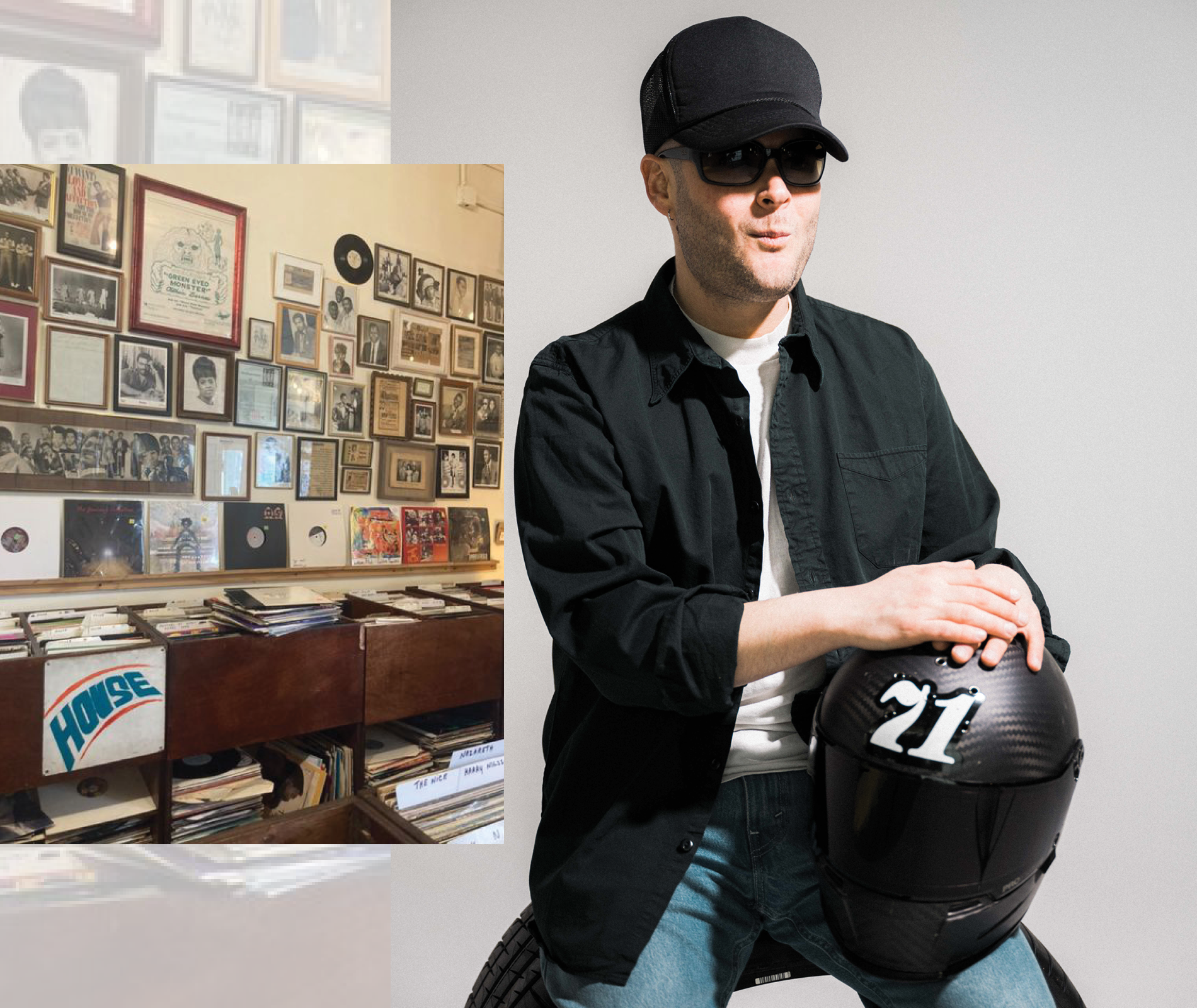
If you had to pick three records that best describe your taste, or that would feel at home in any one of your sets, what would they be?
“Towa Tei – German Bold Italic (Sharp Boys Mix)
Shunji Morwaki – Shirushi o Chidai
Alden Tyrell – Angular“
How did you approach making this mix? Was there any particular concept or feeling you wanted to convey? “I used what’s currently in my bag, which I’ve been playing mostly at the shows I’ve been booked for over the past six-or-so months. Plus some exclusives and music from friends. I like to call my style fast and loose.”
What are you looking forward to this year? Are there any upcoming performances or releases that have you particularly excited or inspired? What are your artistic goals for this year and beyond? “I’m excited for Movement fest. Tt still hasn’t hit me yet; there’s a lot I could say about the road to this moment, but I’ll let the music speak. Im working on the next release, Tincture/My Simulacra, for my own label. “Tincture” is a wild talking track I’ve teased in sets that’s gotten crazy feedback. The singer is AKILLACO; she’s from Detroit. We met at a bar and then went raving all night and it’s about that, laughing at the rave. I love her energy; she’s such a star. I’d like to play in China, Japan, Georgia, Denmark and Australia. I’d love to go back to play in Norway and Amsterdam. Both were a lot of fun. Peace and love.”
2Lanes: Bandcamp, Soundcloud, Instagram, Twitter
You can download Truancy Volume 305: 2Lanes in 320 kbps and see the full tracklist by supporting Truants on Patreon here. Your support helps cover all our costs and allows Truants to continue running as a non-profit and ad-free platform. Members will receive exclusive access to mixes, tracklists, and discounts off future merchandise. We urge you to support the future of independent music journalism—a little goes a long way.

